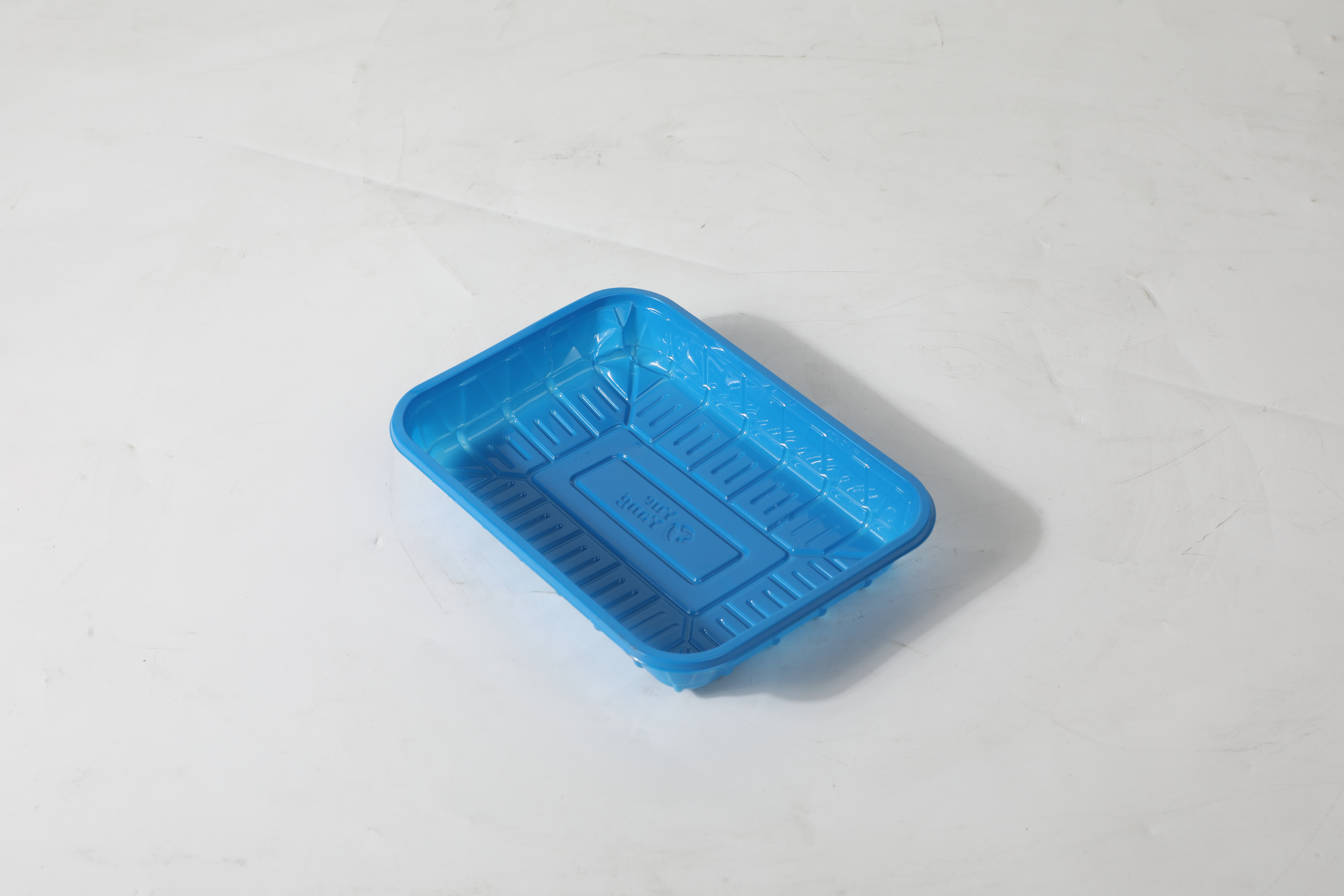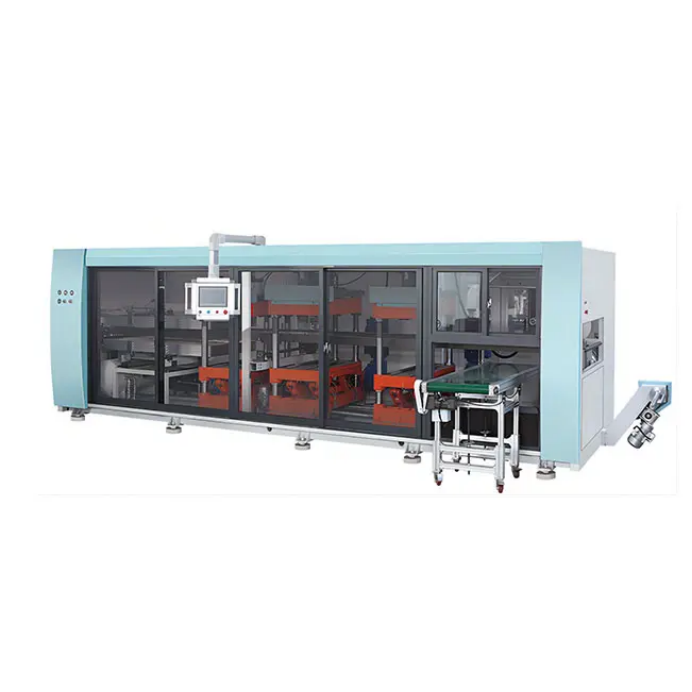
Pressure thermoforming is an advanced manufacturing process used to shape thermoplastic materials into specific forms or designs. It is an essential technique for producing a variety of plastic products with precise geometries and a high degree of detail. This article explores pressure thermoforming in detail, explaining what it is, how it works, its benefits, and the materials commonly used in the process. By the end of this article, you will have a clear understanding of how this process fits into modern manufacturing, especially in industries that require high-quality, durable, and custom-designed plastic components.
What is Pressure Thermoforming?
Pressure thermoforming, also known as vacuum-pressure forming, is a form of thermoforming in which a heated plastic sheet is stretched over a mold, and then pressure is applied to the sheet to ensure it conforms tightly to the mold. Unlike conventional thermoforming, which relies solely on vacuum pressure to shape the material, pressure thermoforming employs additional air pressure to achieve higher precision and deeper draws. The use of both vacuum and pressure provides better material distribution, reducing the likelihood of thinning or material deformation during the forming process.
This technique is commonly used for creating complex, deep-drawn parts and components with a high degree of surface detail. Industries such as automotive, aerospace, packaging, and consumer goods often utilize pressure thermoforming for parts like dashboards, protective covers, and packaging trays.
How It Works?
Pressure thermoforming involves several key steps that ensure the material is heated, stretched, and molded correctly to meet design specifications.
Material Preparation: The process begins with the selection of the thermoplastic material, which is typically a sheet of plastic. The material is chosen based on the intended application and its ability to form well under heat and pressure. The sheet is then placed on a thermoforming machine.
Heating: The thermoplastic sheet is heated to its forming temperature using infrared heaters or ovens. This softens the plastic, making it pliable enough to stretch over a mold. The heating process is crucial to achieving optimal formability without compromising the integrity of the material.
Mold Placement: Once the plastic sheet reaches the correct temperature, it is quickly placed over the mold. The mold is usually made of metal or other sturdy materials capable of withstanding high pressures.
Application of Pressure: This is where pressure thermoforming differs from standard thermoforming. In pressure thermoforming, both vacuum and additional positive air pressure are applied. First, vacuum pressure is applied to remove air between the sheet and the mold, ensuring a tight fit. Then, positive pressure is applied to the plastic sheet, forcing it to fully adhere to the mold and create sharp, precise contours.
Cooling and Solidifying: Once the plastic has fully conformed to the mold, it is cooled down using air or water to solidify the material. The cooling step ensures that the formed shape retains its final structure once it is removed from the mold.
Trimming and Finishing: After cooling, the excess material around the formed part is trimmed away. This is done using cutting tools or automated trimming equipment to ensure the part meets the required dimensions and finish.
Pressure thermoforming can be used to create a wide range of products, from simple shallow trays to deep, complex components with intricate features. The versatility of the process makes it suitable for producing both large quantities and custom-designed parts.
Benefits of Pressure Thermoforming
Pressure thermoforming offers several advantages over other plastic forming techniques. These benefits make it a preferred choice in many manufacturing industries.
High Precision and Detail: The use of both vacuum and pressure ensures that the plastic sheet is tightly formed around the mold, resulting in high precision and fine surface details. This is especially important for parts that require intricate shapes, such as automotive dashboards or medical device covers.
Versatility: Pressure thermoforming is capable of handling a wide range of part sizes and complexities. It is suitable for creating everything from simple trays to highly detailed and deep-drawn components.
Material Efficiency: The application of pressure helps to distribute the material evenly across the mold, minimizing waste. The process also allows for the reuse of scrap materials, making it more cost-effective and environmentally friendly.
Faster Production Cycle: Compared to injection molding or other manufacturing processes, pressure thermoforming has a relatively fast cycle time. This allows manufacturers to produce parts in large quantities quickly and cost-effectively, especially for applications where high-volume production is required.
Cost-Effective for Low to Medium Volume Production: While injection molding can be more cost-efficient for very high-volume production, pressure thermoforming offers a more affordable alternative for low to medium volume production. It requires less expensive tooling and setup costs, making it ideal for prototypes and custom orders.
Material Flexibility: Pressure thermoforming can be used with a wide variety of thermoplastic materials, offering flexibility for manufacturers to choose the material that best suits their application requirements.
Improved Strength and Durability: The pressure applied during the forming process increases the strength and durability of the final product. Parts produced using pressure thermoforming are often more robust and resistant to impact compared to those made using other methods.
Common Thermoplastic Materials Used in Pressure Forming
Thermoplastic materials are the most commonly used materials in pressure thermoforming due to their ability to soften when heated and harden upon cooling, allowing them to be easily molded into complex shapes. Below are some of the most commonly used thermoplastics in the pressure thermoforming process:
Acrylonitrile Butadiene Styrene (ABS): ABS is widely used in pressure thermoforming due to its high impact resistance, strength, and ease of processing. It is often used in automotive applications and for producing consumer products like toys and appliances.
Polyethylene (PE): Polyethylene is a flexible and durable thermoplastic that is commonly used in packaging applications. It is resistant to moisture, chemicals, and impact, making it ideal for products like packaging trays and storage containers.
Polycarbonate (PC): Known for its high optical clarity and impact resistance, polycarbonate is frequently used in the production of protective covers, lenses, and other transparent applications. It can withstand high temperatures and is often used in safety equipment.
Polystyrene (PS): Polystyrene is a lightweight and cost-effective thermoplastic that is used in the production of disposable products like food containers, packaging, and trays. It is easy to thermoform and can be used for both rigid and flexible applications.
Polyvinyl Chloride (PVC): PVC is a versatile material that can be rigid or flexible depending on the formulation. It is used in applications such as signage, electrical components, and packaging.
Thermoplastic Elastomers (TPE): TPE combines the flexibility of rubber with the processing ease of thermoplastics. It is commonly used for products that require both flexibility and durability, such as gaskets, seals, and soft-touch parts.
Polyethylene Terephthalate (PET): PET is a strong, durable material that is commonly used in packaging applications, especially for beverage containers and food trays. It offers good dimensional stability and impact resistance.
Polypropylene (PP): Polypropylene is lightweight, chemical-resistant, and offers excellent impact resistance. It is often used for packaging, automotive parts, and medical applications.
Each of these materials offers distinct advantages, and the choice of material depends on factors such as strength requirements, impact resistance, cost considerations, and the specific application of the finished product.
Conclusion
Pressure thermoforming is a versatile and cost-effective manufacturing process that offers high precision and flexibility in the production of thermoplastic parts. By combining both vacuum and positive pressure, this technique ensures that materials are molded with greater accuracy and fine detail than traditional thermoforming. With its many benefits, including faster production times, reduced waste, and the ability to handle a wide variety of materials, pressure thermoforming is an essential method in industries like automotive, aerospace, and packaging.
As manufacturers continue to seek efficient and cost-effective production methods for complex plastic components, pressure thermoforming remains a popular choice for creating high-quality products. Whether you're involved in producing large volumes of parts or need custom-designed prototypes, pressure thermoforming can provide the perfect balance of precision, efficiency, and material flexibility.
FAQs
1. What is the difference between pressure thermoforming and traditional thermoforming?
Pressure thermoforming uses both vacuum and positive air pressure to shape the material, resulting in more precise and deep-drawn parts. Traditional thermoforming typically relies solely on vacuum pressure.
2. What types of products can be made using pressure thermoforming?
Pressure thermoforming is used to create a wide range of products, including automotive parts, protective covers, medical devices, packaging materials, and consumer goods.
3. Can pressure thermoforming be used for low-volume production?
Yes, pressure thermoforming is ideal for low to medium-volume production because it has lower setup costs compared to other processes like injection molding.
4. What materials can be used in pressure thermoforming?
Common materials used in pressure thermoforming include ABS, polyethylene, polycarbonate, polystyrene, PVC, thermoplastic elastomers, PET, and polypropylene.
5. How does pressure thermoforming improve the quality of plastic parts?
By applying both vacuum and positive pressure, pressure thermoforming ensures better material distribution, reducing thinning and deformation, and providing high precision and fine details.
6. What are the advantages of pressure thermoforming over injection molding?
While injection molding is more suitable for high-volume production, pressure thermoforming offers lower tooling costs, faster cycle times, and greater flexibility for custom and low-to-medium production runs.

















